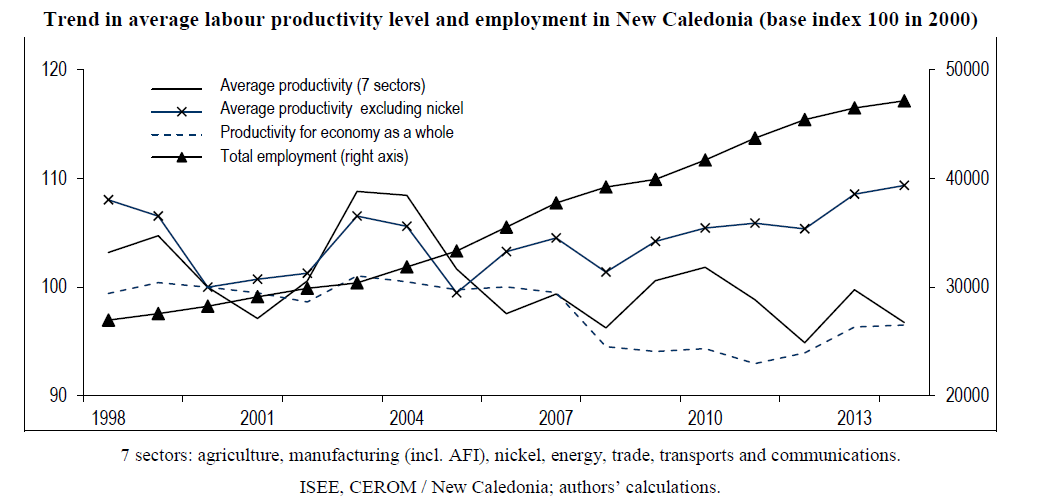Economie et Statistique / Economics and Statistics n° 499 - 2018 Sectoral labour productivity and economic competitiveness in New Caledonia
Article on one page
Key question
The growth slowdown observed in recent years in New Caledonia reveals its extensive growth model losing pace. For decades, this model has relied on the accumulation of labour and capital, drawing largely on nickel mining and export, while protecting its internal market from international competition. To what productivity gains can the New Caledonian economy lay claim? How is its competitiveness developing? What conditions need to be met for a return to steady growth in the medium term?
Methodology
Based on data on economic activity (added value or quantities produced) and salaried jobs, labour productivity indicators are calculated for the main branches of the New Caledonian market sector over the years 1992-2014. Indicators of unit labour costs (wage rates to labour productivity) are calculated based on the guaranteed minimum wage (SMG), and price/cost competitiveness indicators compared with the main partners.
Main results
Sectoral differences in the trends of labour productivity are visible: Four sectors have seen their productivity grow since the 1990s – agriculture, construction, manufacturing industry (including AFIs) and trade – while the nickel, energy and transport, telecommunications and tourism sectors have seen a drop in their productivity.
For the whole of New Caledonia economy, labour productivity is rather stable despite a slight decrease stemming from poor performance in the nickel sector.
The rise in wages, exceeding that of labour productivity, is reflected in an upward trend of unit labour costs and a decline in the price/cost competitiveness of New Caledonia, especially compared with mainland France and Japan.

Main message
The New Caledonian economy has not seen any labour productivity gains for more than two decades. After having been supported by significant investments in the nickel sector during the 2000s, its economic growth slowed, while society remains shaped by strong inequalities. The local government's economic policy – including tax policy and competition policy, as well as increased investment in education – has a key role to play in boosting the productivity gains needed for the long-term growth of New Caledonian.
Article on one page (pdf, 126 Ko )



